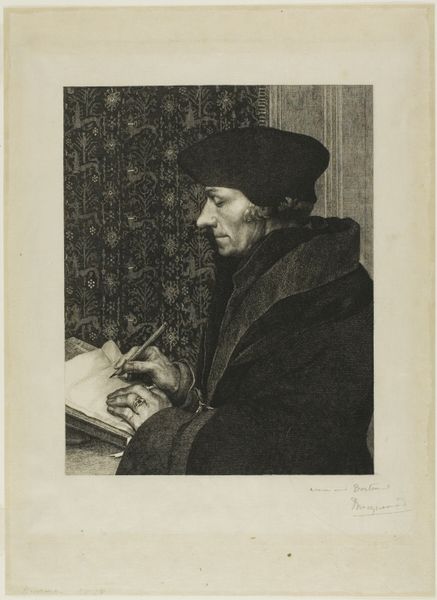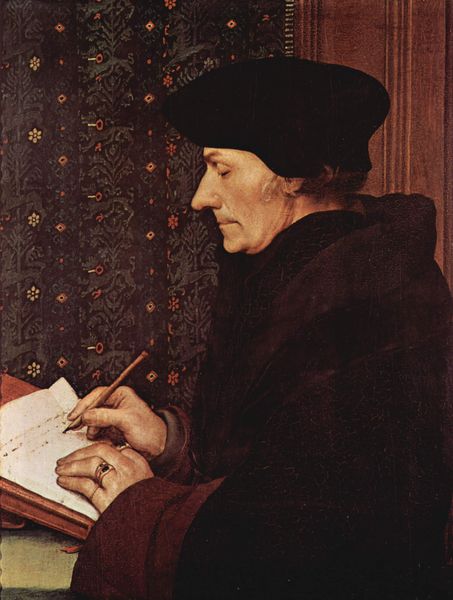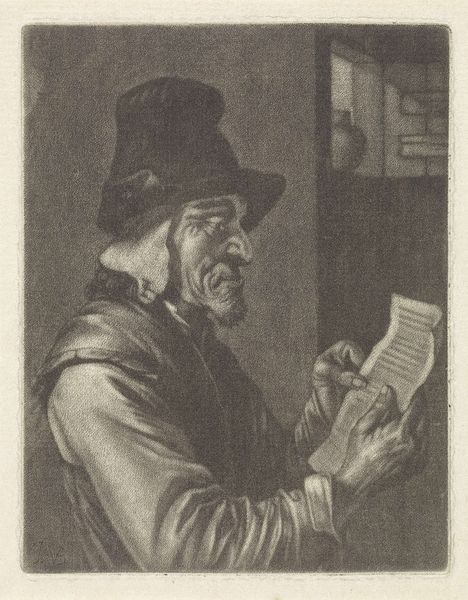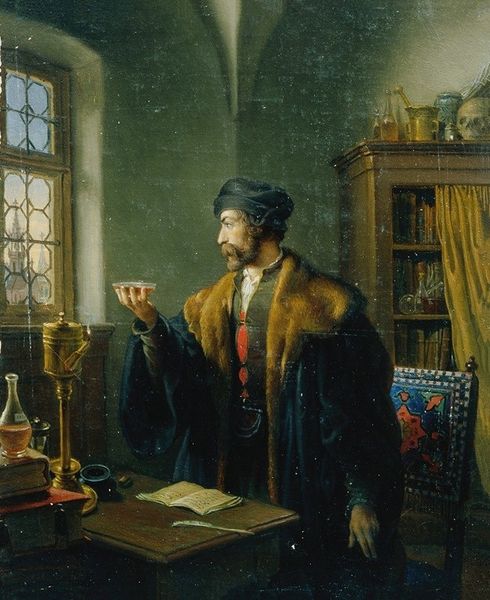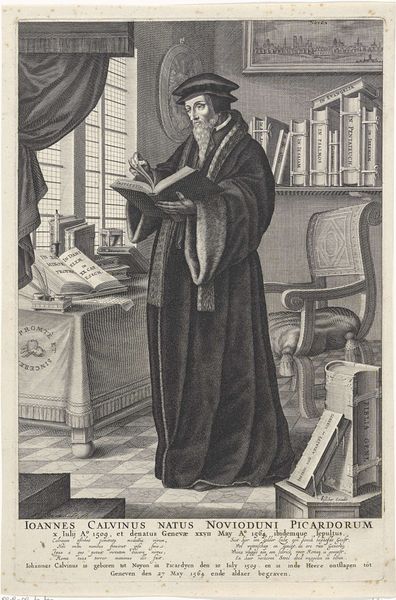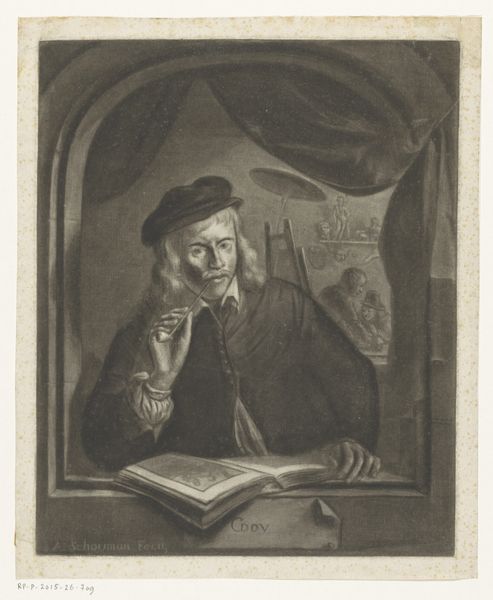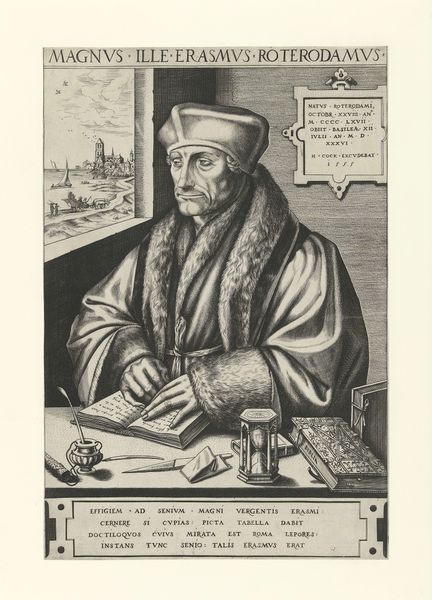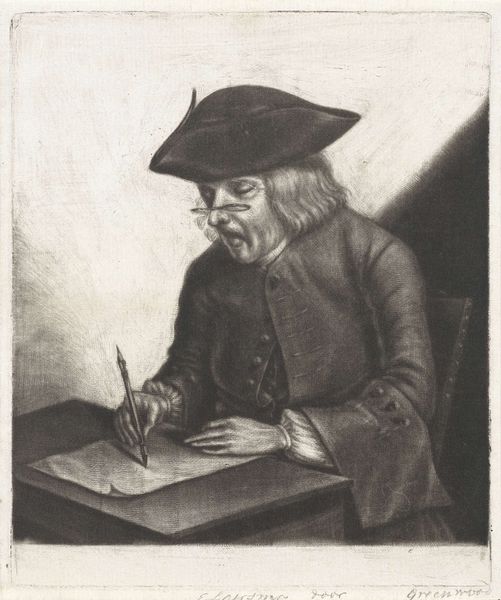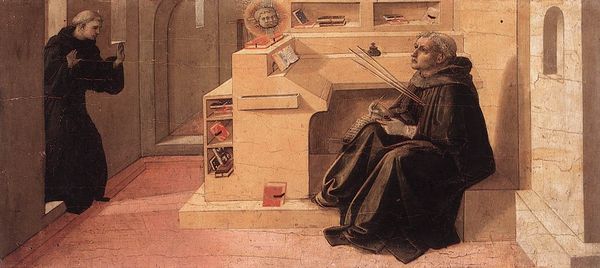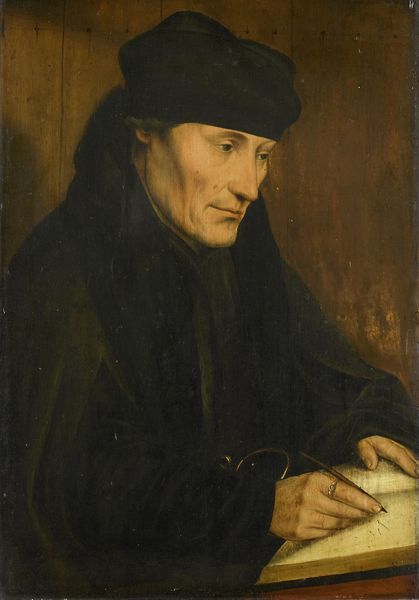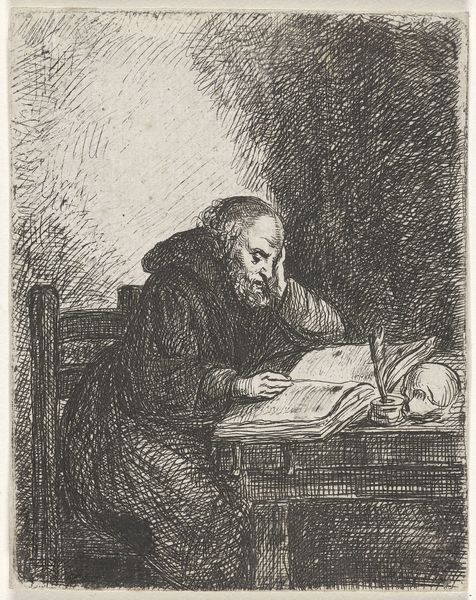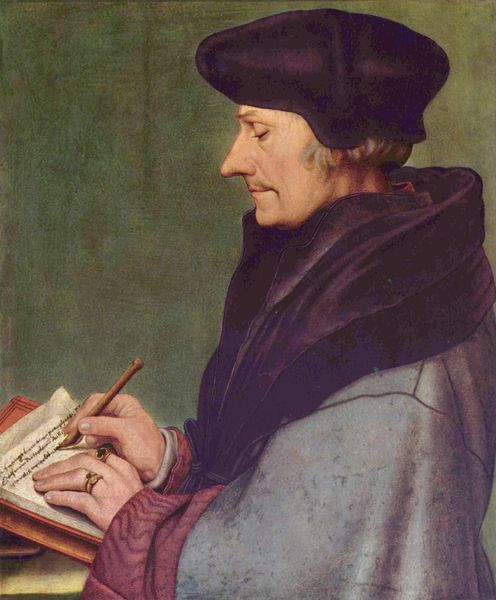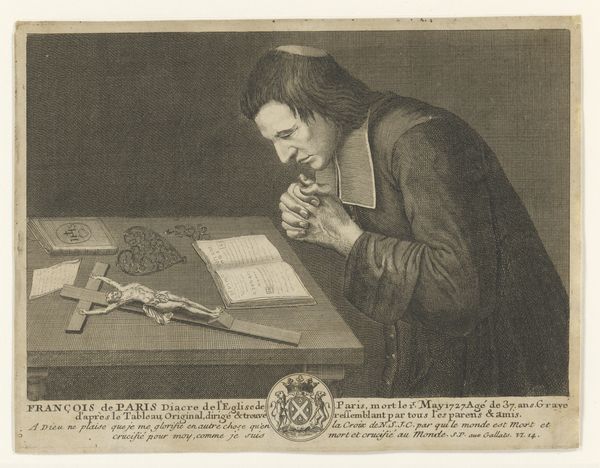
drawing, print, etching, paper
#
portrait
#
drawing
#
portrait
# print
#
etching
#
paper
#
realism
Dimensions: 508 × 389 mm (plate); 544 × 425 mm (sheet)
Copyright: Public Domain
Editor: This is Félix Bracquemond's "Erasmus," an etching from 1863, currently held at the Art Institute of Chicago. There's a remarkable stillness to it, even with the busyness of the patterned background. The texture of the paper itself seems really important here. What strikes you about this work? Curator: I'm drawn to the means of its production. Etchings allowed for multiples, democratizing access to imagery. How does the labor inherent in the etching process—the careful application of acid to the plate, the repetitive act of printing—influence our understanding of Erasmus himself? Was he seen as similarly productive, creating knowledge through laborious writing? Editor: That’s interesting! I hadn't thought about the parallel between the artist’s work and the subject’s profession. Curator: Consider the consumption of prints like these. They weren't unique masterpieces; they were relatively affordable objects, circulated widely. This changed the way people encountered art and ideas, much like Erasmus's own writings, which were also relatively accessible and widely distributed thanks to the printing press. Do you see any connection between the democratization of knowledge facilitated by figures such as Erasmus, and the availability of his likeness through prints? Editor: Yes, I think so. Both seem to challenge traditional notions of exclusivity, whether it’s in access to knowledge or to art itself. The medium reinforces the message. Curator: Precisely. And the materiality – the paper, the ink – these aren't neutral carriers of images; they actively participate in the meaning-making process. By focusing on these elements, we get closer to understanding the social and cultural dynamics at play. Editor: I’ve definitely gained a new perspective on how the method of production and materials used can enrich our understanding of both the subject and the context. Thanks! Curator: It highlights how even portraits are objects of production and consumption that are tied to social systems of value.
Comments
No comments
Be the first to comment and join the conversation on the ultimate creative platform.
